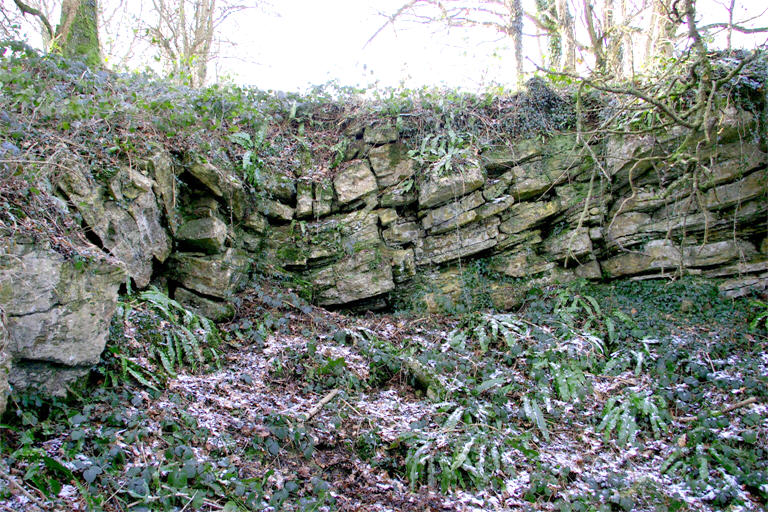
 |
Site 2 - Forest Marble
|
On leaving site 1 notice the flat area on the right. This was formed by the waste from the mine. Continue along the rising path; the
hummocky ground on the left is largely the result of collapses into old mines and an old mine entrance can be seen low down at the path side.
A short distance before the steps to the lower level are reached, a shallow depression off to the right with a tree near the centre can be seen,
(GPS N 51o23.715' W 002o17.800'). Rough steps provide access to the bottom.
On entering the site you can see that the rocks are not horizontal like those at Site 1. The top of the layers (beds) are sloping (dip) downwards and the beds in the lower face get thinner towards the right. Do the beds in both faces dip in the same direction? Remember the faces are at right angles. What has happened to the rocks in the corner between the two faces? These rocks are some of the youngest seen on the reserve (but still about 170 million years old) and form part of the rock formation known as the Forest Marble although they are strictly not marble at all: a true marble being a limestone whose structure has been altered by being exposed to high temperature and/or pressure. The name Forest Marble was first used for a limestone of this formation that was quarried for ornamental stone in Wychwood Forest in Oxfordshire. The rocks seen at this site are hard, brown and contain bands of shells and other fossils, some whole but often fragmented, and are sometimes oolitic. The rock splits fairly easily along the shell bands and has been used for building work such as field walls and farm buildings. Thin clay bands between limestone bands are common; one can be seen in the corner near the junction of the two faces. This site appears to be the result of the rocks collapsing into a mine; such collapses can be seen at several places along the reserve. The beds in the lower face seem to have been little disturbed by the collapse, the variation in bed thickness and slope being the result of the way the sediment, from which the rock formed, was deposited. The deposition of sediments from flowing water is quite a complex process and often gives rise to rock layers or features in the rock, such as bands of broken shells, that are not horizontal. Such rocks are said to be cross bedded (or to show cross-bedding) and their formation (simplified) is illustrated. Cross-bedded rocks will be seen at several of the later sites. The slope of the rocks in the higher face is probably all due to quite recent movement (collapse) though some slopes may be the result of large-scale cross bedding. |

|